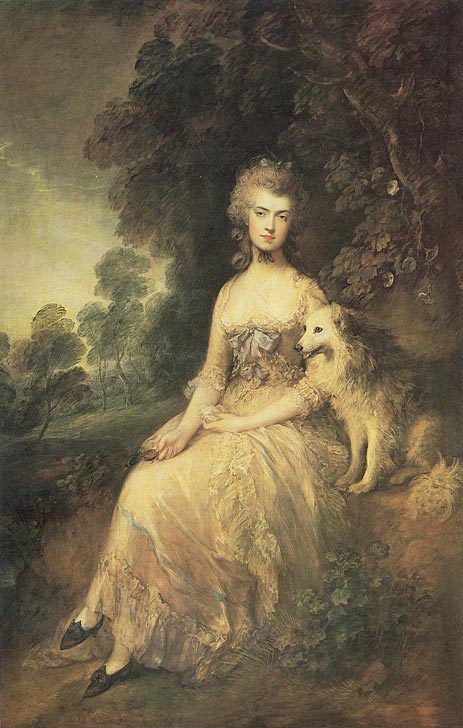by Scott Mehl
© Unofficial Royalty 2020
Mary Robinson was a noted English poet and actress who became the first mistress of the future King George IV of the United Kingdom while he was Prince of Wales. Their relationship lasted just two years.

Mary Robinson, – source: Wikipedia
Mary Darby was born in Bristol on November 27, 1757, to Naval Captain Nicholas Darby and Hester Vanacott. When Mary was very young, her father left the family, leaving her mother to support herself and five children. She did this by opening a school for young girls, where Mary also taught before she was even 14 years old. After the school closed, she attended a school in London run by Hanna More, and there she caught the attention of famed actor David Garrick, who encouraged her to get involved in the theater.
However, Mary’s mother encouraged her instead to accept a proposal from Thomas Robinson, a clerk who claimed to have a large inheritance. Initially against the idea, Mary relented after Robinson had helped care for her and her younger brother while both were quite ill. The couple married in April 1774 and Mary soon discovered that her husband did not have any inheritance, nor was he a devoted husband. The couple had one child, a daughter named Mary Elizabeth Robinson, born in November 1774.
When Mary’s husband was put into Debtor’s Prison in 1775, Mary went with him, living there with their six-month-old daughter for nearly 15 months until he was released. While there, Mary discovered she could publish some of her poetry to make a living. Her first book of poetry Poems By Mrs. Robinson was published in 1775. She soon caught the attention of Georgina Cavendish, Duchess of Devonshire who became somewhat of a patron to Mary, sponsoring the publication of Mary’s second book of poetry — Captivity.

Mary Robinson as Perdita, 1782, portrait by Sir Joshua Reynolds. source: Wikipedia
In 1776, following her husband’s release, Mary returned to the theater, appearing in several roles at the Drury Lane Theater. While performing as Perdita in an adaptation of Shakespeare’s A Winter Tale in 1779, Mary caught the attention of The Prince of Wales, the future King George IV, who attended a performance and was instantly smitten. The Prince pursued her relentlessly, but Mary refused his advances for some time. She was a married woman, although mostly estranged from her husband, and she was an actress. A relationship with the Prince would mean giving up what was becoming a financially successful career. The Prince promised her £20,000 in writing to compensate for giving up her livelihood to become his mistress. Maria eventually relented, and following her final performance in May 1780, she gave in to the Prince’s advances.

The Prince of Wales, c1781, portrait by Richard Cosway. source: Wikipedia
The relationship was relatively short-lived. In December 1780, Mary received a message from the Prince, telling her they must end their relationship. Unbeknownst to Mary, the Prince had moved on to a new mistress, something he continued to do for the rest of his life. Despite a brief meeting a few days later, the relationship abruptly ended. Mary now found herself without any means of support, emotionally or financially. She decided publishing her correspondence with the Prince would provide her with a significant income. When the Prince’s father King George III became aware of this, he quickly dispatched the Prince’s treasurer to arrange a settlement. Eventually, Mary received a payment of £5,000 in exchange for the letters. But Mary had another ace up her sleeve. Finding that the settlement barely covered her debts, she decided to pursue the Prince’s promise of £20,000. The King’s representative argued that the document from the Prince was invalid as he was underage, but Mary was unwilling to accept that as final. She asked for an annual annuity in exchange for the document, and eventually, she was successful. The matter was settled in August 1781, when it was agreed that she would receive £500 annually and that upon her death, her daughter would continue to receive half that amount.

Banastre Tarleton, portrait by Sir Joshua Reynolds. source: Wikipedia
Mary Robinson, by now living separately from her husband, had several more affairs, including a long-term liaison with Banastre Tarleton, a distinguished soldier. She became mysteriously ill in 1783, and although she recovered, she was left partially paralyzed and frail. She turned her attention back to her writing, publishing several books of poetry, eight novels, three plays, and her memoirs. She became a champion of women’s rights and an outspoken supporter of the French Revolution.
Despite her financial settlements with the Crown, Mary Robinson died in relative poverty in Englefield Green, Surrey, England on December 26, 1800, at just 44 years old. She was buried at St. Peter and St. Andrew Churchyard in Windsor, Berkshire, England. Her estranged husband was granted administration of her estate, and Mary had instructed her daughter to publish the rest of her works after her death. Although her brief affair with the Prince of Wales was long in the past, she left a request upon her death that a lock of her hair be cut off and sent to the Prince. It is said that upon the future King George IV’s death in 1830, he requested that a lock of hair be buried with him.
This article is the intellectual property of Unofficial Royalty and is NOT TO BE COPIED, EDITED, OR POSTED IN ANY FORM ON ANOTHER WEBSITE under any circumstances. It is permissible to use a link that directs to Unofficial Royalty.
